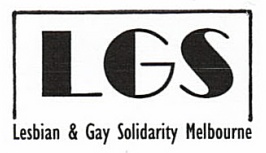



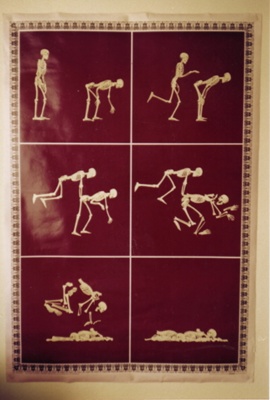

TOPIC: AIDS
Anonymous wrote:
Letter Subject: AIDS - a different story : response
Letter date: 2004-08-24 09:50:42
For a scientist, you show a whole lot more reliance on sensationalized journalism than you should.
In the article it is claimed that South Africa has the highest HIV positive people in world. After reading that statement, I went looking for the source of that statement, but I found none. I therefore find the exercise of quoting media sources by scientists rather disturbing. As I mentioned before, the media seems to have abondoned their truth seeking crusade, in favour of following the norm.
So, if you wish to quote a journalist to prove scientific fact, then you are nothing but a pseudo scientist.

TOPIC: AIDS
Ngwato Mtshweni ( ngwatom@telkomsa.net ) wrote:
Letter Subject: AIDS - a different story
Letter date: 2004-08-25 13:04:28
Your concern for my fellow South Africans who are dying of mysterious diseases or so-called AIDS0-related diseases is noted and indeed appreciated.
What is not however appreciated is your presumptuous and know-it-all attitude that manifests itself in your correspondence, characteristic of all other HIV/AIDS proponents. You have added nothing to the debate except to tell us what we have heard before.
I may not have been a health worker, but I understand and practise the "scientific method" in my field and that is enough to qualify me to question what has been said about HIV and AIDS. We are not reinventing the wheel as you assert with such authority but we want research to continue until the link between HIV and AIDS is either established or refuted.
The article you referred to is not telling us anything new either. Every Saturday is burial day in any SA township and so what?
I sent this letter to IOL in South Africa on 29 August 2004 and it was published the following day:
TOPIC: Aids(sic) Mannie De Saxe wrote:
Letter Subject: AIDS and ostriches Letter date: 2004-08-30 13:27:56
A dictionary definition of an ostrich is: 1) a large fast-running flightless African bird with powerful two-toed feet and dark feathers; 2) a person who refuses to recognise an unpleasant truth.The tragedy in the South Africa of 2004 is the number of human ostriches who think HIV/AIDS is just some invention of US scientists. Even assuming this to be true, the devastation caused by this disease has decimated many countries, and is in the process of decimating even more, because of the ostriches with which these countries are inhabited.Sadly the daily deaths in South Africa and around the world show the results of the devastation.
To add to the terrible scourge is the scourge of rape in South Africa. This exacerbates the HIV/AIDS crisis because, without education in the community, there is a widespread belief amongst many men that having sex with a virgin will protect them from acquiring HIV/AIDS.A report from Johannesburg on 27 August 2004 stated: “It's not just the immediate horror of rape, there's also the fear of HIV/AIDS. South Africa has the largest HIV positive population in the world. More than five million people are infected. Many of them are children and teenagers.
Rape brings with it the fear that the child may have been infected. Doctor Lorna Jacklin ia a paediatrician. She's one of the first people to examine children when they arrive at the Teddy Bear clinic in Johannesburg. From the time the child is raped, doctors have less than 72 hours to deliver AIDS medication. After that it can be too late. It's a terrible race. The longer the delay, the less chance they have of treating the infection. Dr Jacklin says it's frustrating and painful.So, back to ostriches. There are none so blind as those who will not see, because their heads are buried in the sand. This is one of the tragedies of South Africa today.
# posted by Mannie : 1:13 AM

Tuesday, August 31, 2004
The tragedy of the South African AIDS crisis is that people like Anonymous are afraid of putting their names to letters because they would be held up, quite rightly, to the ridicule they deserve, and they continue writing such appalling misinformation which people read and possibly believe! This response has so much rubbish in it that one can't really take it seriously. The ignorance is appalling as is the tragedy that this person refuses to get educated on the subject about which he/she is writing!
TOPIC: Aids (sic) Anonymous wrote:
Letter Subject: AIDS and ostriches: response Letter date: 2004-08-31 13:38:05
"This exacerbates the HIV/AIDS crisis because, without education in the community, there is a widespread belief amongst many men that having sex with a virgin will protect them from acquiring HIV/AIDS."Sadly, as a scientist you seem prone to scare people and play to the gallery. Nothing you have said has any scientific value. It merely tells us that you have no ability to view things critically from a scientific perspective.
What you enjoy doing is to rely on the media to make up your mind.Even if it was AIDS that was killing people, does it eliminate the need to research further to understand other possibilities that might exist.Does this mean because people are dying that research has to stop and people fed often toxic drugs? Surely, if yours is intended as scholarsly research in order to save lives, then it failsYou quote a newspaper report, rather than research. Research was done in South Africa which placed the rate of HIV sufferers to be less than 12%.
This report contradicts one that is often quoted and which placed infection rates at 20% of the population. This was based on reports from neonatal clinics in KZN, which is not representative of the population.Further research has indicated that those who are circumcised are likely to be less affected by HIV compared to those who are not. Further research in Africa pinpoints a certain group of prostitutes exposed to HIV but are not positive even after engaging in unprotected sex.
So, it is clear that exposure does not immediately lead to infection, and infection does not always lead to HIV.There are people who make a living out of lies, and you are one of those. I do agree with the use of ostrich to describe your attitude to further scholarship on the subject.You sound like one of those hired by the drug manufacturers and whose salary depends on feeding people toxic material so you can make profits. You could not care less what happens afterwards.
While there are people who once believed that raping a virgin will reduce the chance of infection, it is not something that is as widespread as you claim.Once again, you rely on unverified data. If you were my doctor, I would seriously consider my life options.

I sent the letter below to RedRibbon in South Africa and hope they will respond to it.
Name: Mannie De Saxe Email: josken_at_zipworld_com_au

Wednesday, October 20, 2004
An article in The Age, Melbourne, on Monday 18 October 2004 is headlined "Condoms needed to curb HIV rate in jails." by Carol Nader.
When we moved to Victoria from New South Wales in 2000 we took it for granted that after the most conservative state in Australia, New South Wales, had agreed, after years of resisting, to supply condoms in the prisons in that state, every other state and territory in Australia was doing just that - supplying condoms to prisons. How wrong can one be!!!
This is the article:
"The rate of HIV among prisoners - more than three times higher than the rest of the population - will continue to grow unless the State Government supplies inmates with condoms, sexual health experts have warned.
A paper recently published in the journal Sexual Health argues that public health policy must involve the whole community if the rate of HIV is to be reduced.
The paper, by the Burnet Institute, says 0.2 per cent of Australia's prisoners have HIV, compared with 0.06 per cent of the rest of the population. In Victoria, where condoms are not available in prisons, 0.3 per cent of prisoners have HIV.
Steve Wesselingh, director of the Burnet Institute, said sex between men was common in prison, but there was a naive belief from correctional services that it did not occur.
'If they gave them condoms then they're accepting that sex occurs,' he said.
A report earlier this year by the Australian National Council on Drugs recommended that condoms be available to inmates.
But Corrections Minister Andre Haermeyer's spokesman, George Svigos, said the minister would need a 'very convincing case for that current arrangement to change.'
The prison officers' union, the Community and Public Sector Union, also opposes it, mainly on the grounds that condoms can be used to smuggle in drugs.
The union's assistant secretary, Jim Walton, said having condoms available might encourage assault.
Opposition health spokesman David Davis said: 'HIV in prisons may well be a source of HIV spread into the general community and, in that light, public health measures that minimise or manage that spread, should be firmly on the agenda.'"
In the year 2004, if the Victorian government sincerely believes that sex does not occur in male prisons in that state, it really is living in some time warp or fantasy land. Maybe they should take time out to study the findings in other states and countries and also read the report by a New South Wales magistrate, David Heilpern on what happens to young males in New South Wales prisons.
Sex is not only a fact of life, of course, but sex between males in prisons is a given as is sex between males in any males only institution. If the union believes that drugs can be smuggled into prisons in condoms, how does it explain the amount of drugs in prisons without condoms? It is a well known fact that prison officers encourage the use of drugs in prisons to keep prisoners sedated, and so to cause them - the prison officers - less trouble from violent and aggressive prisoners.
The Victorian State government needs to take a reality check and change its attitudes before there is a public health disaster in this state with an increase in HIV rates of infection directly attributable to the government's incredibly narrow-minded policies.
# posted by Mannie : 1:00 AM

Australian Press Council Adjudications >> 1993 >> [1993] APC 54
Adjudication No. 662 (August 1993) [1993] APC 54
ADJUDICATION No. 662 (August 1993)
In dismissing a complaint lodged by Mr Mannie de Saxe, of Lesbian and Gay Solidarity, against the Sydney Morning Herald's use of the word "victim" in an editorial, "Scientific truth and AIDS" on 5 January 1993, the Press Council is subscribing to a general view that there is no need to ban a word accurately used and commonly understood.
The editorial related that Dr Robert Gallo, the American co-discoverer of the cause of AIDS had grown the virus from samples taken "from the body of an AIDS victim".
Mr de Saxe complains "the Sydney Morning Herald has been told, by phone, letters, faxes, that people living with HIV/AIDS are not 'victims' as common usage of that word has come to have connotations of 'innocence or guilt'" and that this editorial context of the word reflects the newspaper's "discriminatory attitude".
The Sydney Morning Herald responds that "it is crystal clear from the context that the writer's reference to AIDS 'victims' drew no distinction whatever between the various means by which those people might have acquired the disease". It argues that "It surely is just as reasonable to hold that all people with AIDS are victims of the disease as it is to say that all suffer from it".
Against the charge of displaying a discriminatory attitude, the newspaper states it has long recognized the sensitivity of the AIDS issue and that the way its journalists report and comment has changed with the community. The gradual learning process for the press and the community has not yet finished and the Herald Style Book, published last year, has been revised to read:
"AIDS: be careful how you refer to people who suffer from the virus. They should not be tagged victims and we should be wary of the phrase 'innocent victims' as this makes a judgment on other sufferers".
This directive is binding on all staff, and, although the newspaper concedes that in this instance the better word would have been 'sufferer' and that the editorialist would be so reminded, the Press Council views this use of the word in the sense that anyone suffering the fatal consequences of a disease is a victim. It was a neutral, not a pejorative, use of the word.
URL: http://www.austlii.edu.au/au/other/APC/1993/54.html


Two Stars: A Celebration of Life - was launched at the Newcastle Library on 16 November 1999. The launch of the Two Stars book was accompanied by an exhibition which honours the lives of those people from the Hunter Region who are living with HIV and those who have died in the AIDS epidemic.
SEE ALSO CARRINGTON COMMUNITY MEMORIAL PARK

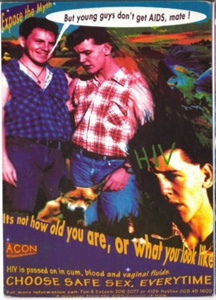


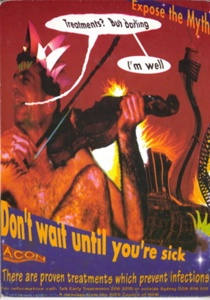

From PlanetOut (USA):
SUMMARY: In a turnaround hailed by activists, South Africa proposes a five-year plan to halve the number of new HIV infections in the hard-hit country.
The South African government proposed a five-year plan Wednesday to halve the number of new HIV infections in their country, saying it had failed to persuade young people to change their sexual habits.
In a report, the government also said the country needed to better address the stigma associated with the disease, which discouraged many people from being tested, and vowed to expand its treatment and care program to cover 80 percent of people with AIDS.
The report's frankness -- and the warmth with which it was received by AIDS activists -- marked a turnaround after years of international condemnation for policies that many said went against medical advice and activists' efforts.
Former Health Minister Manto Tshabalala-Msimang, in particular, has been criticized for questioning antiretroviral treatments and promoting nutritional remedies, such as garlic and lemons, to fight the disease.
"This plan marks a turning point in the struggle to stop the HIV/AIDS epidemic," said Zwelinzima Vavi, the general-secretary of the Congress of South African Trade Unions. "We hail the new spirit, which signals the end to acrimonious debate and the standoff between government and important sectors of our people."
Poor coordination and lack of clear targets and monitoring has helped AIDS to become a major cause of premature death in South Africa, with mortality rates increasing by about 79 percent in 1997-2004, with a higher increase among women, the 120-page report said.
About 5.54 million people were estimated to be living with HIV in South Africa in 2005, with 19 percent of the adult population affected. Women in the 25-29 age group were the worst affected, with prevalence rates of up to 40 percent.
"There are still too many people living with HIV, too many still getting infected," the report said. "The impact on individuals and households is enormous." Children were also vulnerable, with high rates of mother-to-child transmission.
A separate report from the Human Sciences Research Council HIV said there were an estimated 571,000 new HIV infections in 2005 -- roughly 1,500 per day. The report, which appeared in the South African Medical Journal, said that more than one-third of the new infections were in the 15-24 age group and that women accounted for the overwhelming majority.
A two-day conference, beginning Wednesday, brought political and business leaders together with AIDS activists to discuss ways to implement the government's five-year plan.
"The National Strategic Plan includes ambitious targets to reverse the course of HIV and AIDS over the next five years," acting Health Minister Jeff Radebe said. "These bold targets reflect our commitment to combat HIV and AIDS."
The government appointed Radebe last month, after Health Minister Manto Tshabalala-Msimang left her duties due to illness. Since taking the post, Radebe has sought to mend fences with doctors and AIDS activists, including the main Treatment Action Campaign group, after years of Tshabalala-Msimang advising South Africans that natural remedies were better for fighting AIDS than antiretrovirals.
Deputy President Phumzile Mlambo-Ngcuka, appointed last year to efforts in revamping the country's AIDS strategy, said the government had set aside US $1.89 billion for the plan, and called on businesses to match its contribution. She called for targets to be set and met to ensure the plan had the required impact, saying "our actions must be measurable."
The proposed plan -- meant to be finalized by the South African National AIDS Council later this month -- set a target for reducing the number of new HIV infections by 50 percent by 2011. To reach the target, it called for more effort in empowering women, who often are targeted in sexual abuse, and to encourage people to be tested for the virus.
More also must be done to promote behavior change in young people, the report said. Mlambo-Ngcuka urged youths to delay their first sexual experiences and to be at the forefront of the fight against the disease. "We would like to make sure our young people believe there can be and there will be an Africa free of AIDS," she said. The Treatment Action Campaign, in the past highly critical of government efforts, welcomed the proposed five-year plan as one of the "best responses" to the epidemic.
"We can already recognize significant departures from the previous plan (for 2000-05) which didn't have targets or recognize the drivers of the epidemic," said Sipho Mthathi, the campaign's general secretary, according to the South African Press Association.
The report said the government should aim to provide "appropriate packages of treatment, care and support to 80 percent of HIV-positive people and their families by 2011." Currently, nearly 250,000 people are receiving antiretroviral therapy -- about 20 percent of the estimated number of people living with HIV.
The report also said a tuberculosis epidemic in South Africa was closely linked to AIDS, and voiced concern about the emergence of a nearly untreatable TB strain that preys on those with a suppressed immune system. More coordination in managing the two diseases was needed, it said.

This letter by LACHLAN WATTS, Melbourne, in the Sunday Age of 22 April 2007 shows yet again the Bush adminstration's hypocrisy over its so-called christian faith adherence - death to African communities because basically they are an expendable commodity:
Expensive abstinence
"So now we have it. The Sunday Age reported that a study has shown the $1 billion spent by the US in trying to convince its youth to engage in abstinence has been a failure. Some time ago I saw a TV program on AIDS in Africa. It traced how Bush was proposing to spend $1 billion on condoms and AIDS education in Africa - that was until the religious right got into the act and $1 billion was spent trying to convince Africans of the need for abstinence. $1 billion down the plug hole, but with the AIDS epidemic in Africa still out of control. Imagine what the $2 billion could have achieved!"

The Age reported on 28 April 2007 that the HIV positive man convicted in Adelaide of having unprotected sex with three women has lost an appeal after a judge rejected defence claims the virus did not exist.
HIV revisionism has a long history in the USA, South Africa, Australia and other countries around the world. In South Africa the main proponent of HIV revisionism is the president himself, Thabo Mbeki. So bad has the situation been in a country where the epidemic has long been out of control and treatments denied by the South African government because of the president’s and health minister’s views – she says “let them eat garlic” – that the government has been taken to the courts in order for treatment drugs to be made available as generic drugs so that access is widely available.
The South African context is relevant in the Adelaide case mentioned above because the convicted man, Andre Chad Parenzee hails from South Africa. He was convicted on three counts of endangering life last January (2007) after one of the women, a mother of two, became infected with HIV.
Defence lawyers, no doubt responding to their client’s country of origin, launched an appeal, calling two Perth so-called medical researchers – Eleni Papadopulos-Eleopulos and Dr Valendar Turner – who testified in the South Australian Court of Appeal the virus did not exist and could not be sexually transmitted.
The judge fortunately was an enlightened man and was not to be intimidated by HIV revisionists who may have been had to be called as part of the appeal by the defence. Justice John Sulan dismissed the witnesses’ testimony and rejected the application for a retrial.
It is an interesting sideline to this trial that it took place in Adelaide where one of Australia’s leading Holocaust deniers lives. He, too, has become an HIV denier, stating that AIDS does not come from HIV. His name is Frederick Toben and he runs an organization called the Adelaide Institute – a reactionary right-wing “think tank”!!!

The following item appeared in the New Internationalist, December 2006, and tells the story of the South African government and the HIV/AIDS crisis:
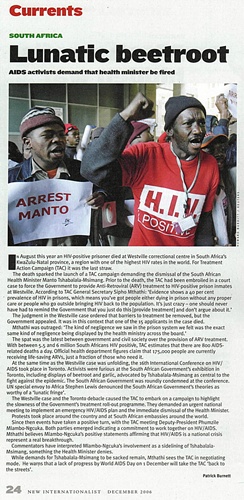

article in PlanetOut Network from USA:
SUMMARY: Most jails will not permit the distribution of condoms to prisoners to stop the transmission of HIV and other STDs.
To activists concerned about AIDS and prisoners' rights, it's an urgent, commonsense step that should already be nationwide policy -- letting inmates have condoms to reduce the spread of sexually transmitted diseases behind bars.
Yet their efforts have run headlong into a stronger political force: Authorities' desire not to encourage inmates who flout prison rules against sex. Only one state, Vermont, and five cities regularly hand out condoms to inmates. Mississippi does so only for inmates receiving conjugal visits from their spouses.
Left out are the vast majority of America's 2.2 million prisoners -- many held in facilities where sex between men is common and the risk of STDs is far higher than in the general population.
''I realize this is not a comfortable topic for many people, but it's one we simply cannot afford to ignore,'' said Rep. Barbara Lee, D-Calif. ''When more than 90 percent of incarcerated people return to our communities, taking a head-in-the-sand approach to the fact that our prisons have become a breeding ground for HIV/AIDS poses a serious public health risk.''
Despite such warnings, recent efforts to expand behind-bars condom access have gone almost nowhere. Prison officials contend that condoms can be used to conceal drugs, and law-and-order politicians scoff at what they depict as a step that would encourage both consensual and coercive sex.
''Removing the freedoms of criminals is in itself a deterrent,'' said California Assemblyman Paul Cook. ''Allowing condoms into prisons simply sends the wrong message and confirms what we all suspect: Our prison system has serious and severe behavioral and inmate-control issues.''
A measure introduced by Lee in Congress this year to allow condom access in federal prisons has made little headway. A bill in Illinois failed to clear a legislative committee in March. And a bill in California was vetoed last month by Gov. Arnold Schwarzenegger, who said the proposal conflicted with prison regulations banning sexual activity.
Yet Ron Snyder, an HIV-positive Californian who served 19 months in the state's prison systems for embezzlement, said sex was widespread despite the rules. Some inmates used rubber gloves as makeshift condoms, and some supervisors allowed romantically involved men to share cells, he said.
Schwarzenegger, in his veto message, offered a ray of hope to advocates of condom access. He described it as ''not an unreasonable public policy'' and instructed corrections officials to assess the feasibility of a pilot program at a yet-to-be-selected state prison.
Snyder predicted a ''tough struggle'' to extend any such program systemwide because of staff attitudes. Many of the correctional officers are from rural areas, ''and they assume men don't have sex with men,'' he said. ''They just don't understand the picture.''
California already is home to two of the local condom programs, at jails in Los Angeles and San Francisco. New York, Philadelphia and Washington, D.C., also have programs -- New York's dates back to 1987.
In Los Angeles, the condoms are distributed by an activist group, the Center for Health Justice, only in a special unit reserved for gay men who ask to be assigned there. San Francisco, for nearly 20 years, has allowed prisoners to be issued condoms by the health staff; distribution was expanded in April in the form of a condom-dispensing machine placed in a jail recreation hall.
Mary Sylla, the Center for Health Justice's policy director, said there have been no security problems in either city. ''If there was a case of somebody doing something horrible with a condom, we would have heard about it -- it would be all over the corrections community,'' she said. ''But it doesn't happen.''
Though disappointed by Schwarzenegger's veto, Sylla is hopeful that a pilot program will indeed get started in the state prison system. She said corrections officials already had visited the Los Angeles unit to see that local program in action.
But Sylla acknowledged that the cause is tough to promote.
''It's easy to make fun of,'' she said. ''People don't like to think about prisoners having sex, even though everybody knows it goes on.''
Vermont's Corrections Department, although it holds relatively few HIV-positive inmates, has been making condoms available in prisons since 1992 -- even though sexual activity remains officially prohibited.
''It's a courageous position that Vermont took then and continues to have now,'' said the department's health services director, Dr. Dolores Burroughs-Biron.
Under the program, inmates are granted a single condom at a time if they request one from a nurse. Burroughs-Biron said there had been no reports of any security problems.
But corrections officials insist there are dangers. Glenn Goord, New York State's former corrections commissioner, told the Legislature that inmates use condoms to transport drugs within prison grounds. He also said condoms might embolden prison rapists, who could use them to avoid leaving DNA evidence after their assaults.
There is no authoritative U.S. data on the extent of HIV behind bars, but the federal Centers for Disease Control did conduct a detailed study in Georgia which found that 856 male inmates -- about 2 percent of the state's total -- were HIV-positive, and that 76 of them apparently got the virus while in prison.
The CDC report, published last year, suggested that lawmakers consider the condom policy.
Patrick Sullivan, the CDC epidemiologist who led the study, said sex among inmates was common in Georgia despite being prohibited. He said many of the sexually active inmates used condoms -- or some improvised substitute -- even though they were considered contraband.
In several foreign countries -- including Canada, Australia and much of Western Europe -- condoms have been freely distributed to prisoners for years without security problems.
Though activists are convinced condom access would reduce STD transmission, they are cautious in making specific health claims.
''I don't know how we'd ever be able to prove how much they reduce HIV,'' said Ron Snyder, who now works for the Center for Health Justice. ''But if we could affect one or two people who wouldn't bring it back to their women when they get home, that's dramatic impact right there.''

This letter was written by Rob Lake to the Sydney Star Observer and relates to an earlier item higher up on this page referring to AIDS "victims"!
by Rob Lake from Positive Life NSW | 27/02/2008 1:08:47 PMCan SSO please change the language you use to refer to people with HIV? We are neither sufferers nor victims. At different points in our life with HIV, we may experience pain, distress, fear or grief. Living with HIV can bring with it chronic pain, poverty and sadness. Trying to limit the impact of these is the work of organisations like ours – because that’s not all we experience and that’s not just who we are. We are active and valued contributors to this and other communities, families and relationships.
To some people, this may seem picky. However, since the first days of HIV in Australia, how we were described has been critical in setting the tone of how we are included in responding to HIV.
That is why we fought to be called people living with HIV/AIDS in the 1980s. We’ve tried to simplify that to people with HIV.
The need for this language has not changed. Australia is recognised for the way our response to HIV centrally includes people with HIV and other affected populations.
— Rob Lake, CEO, Positive Life NSW
Article in The Age newspaper:
RESEARCHERS have discovered a potent new drug that effectively blocks HIV in people with highly resistant strains of the virus, allowing them to live healthy lives.
The drug, raltegravir, has the potential to suppress the virus in millions of people worldwide after a trial found it reduced the virus to undetectable levels in 62% of people taking it in combination with other anti-HIV medicines.
The global trial on 700 people with untreatable strains of the virus found that only 0.9% of people had to stop taking the drug because of side effects including nausea and headaches, a report published today in the New England Journal of Medicine said.
Professor David Cooper, co-author of the report and director of Australia's National Centre for HIV and Epidemiology, said the drug had significantly enhanced the lives of about 500 Australians taking it in the form of a twice-daily pill.
"It's been amazing. These people have been taking drugs for years and have never had undetectable levels of the virus," he said. "Having said that, it has only worked for 60% of people, so it doesn't work for everyone." Contrary to views expressed by European researchers earlier this year, Professor Cooper said people with undetectable levels of the virus were still potentially infectious.
He said the impressive results of the year-long study had prompted the Therapeutic Goods Administration to fast-track approval for the drug in Australia this year. It was listed on the Pharmaceutical Benefits Scheme last month. "The drug has a different mechanism of action to drugs we've seen in the past, is very potent and seems safe … It's a very important development to the field," he said.
The director of The Alfred hospital's infectious disease unit, Professor Sharon Lewin, said the drug was a great step forward for the estimated 500 Australians whose virus had become resistant to other drugs.
"Until recently, there has been no other option for these people … so they would generally just get sick and die," she said.
"This drug has had a dramatic impact on their quality of life and predicted life span."
Professor Lewin said it was too early to tell if raltegravir could be used to treat people whose virus had not yet become drug resistant, but she said studies were under way.
Professor Cooper said he hoped the drug, which is being tested and developed by Merck & Co, would be made available to millions of people living with drug-resistant HIV in poor and developing countries.
"We're not sure what Merck will do in terms of making it available in resource-poor settings," he said.
"Traditionally, what the companies do is have a three-tier system so that rich countries pay the full price, middle-income countries like Thailand and Brazil pay an intermediate price, and the poorest countries pay cost price. But we don't know what the cost of this is yet."
About 23,000 Australians have been diagnosed with HIV since the beginning of the epidemic, and about 10,000 are receiving treatment.

From ABC News 20 September 2008:
The aged care sector is said to be facing new challenges as people living with HIV and AIDS grow older.
Breakthroughs in medical treatments mean that people who develop AIDS are living much longer and will need to use aged care facilities.
The West Australian AIDS Council's executive director Trish Langdon says many aged care workers have not had much experience dealing with HIV and AIDS.
She says much needs to be done to make sure that people with the virus, who are having to deal with a complex range of health issues, can get the level of care they need.
"This is going to be quite challenging for the next 5 to 10 years, for a very large sector, who've actually you know in some ways fairly under-resourced and got actually quite a lot on their plate anyway," she said.

“Reprinted from Volume 7 No 2 of HIV Australia, published by the Australian Federation of AIDS Organisations.”
Same-sex law reform and pension changes are long overdue, but time is needed for transition to prevent harm for those most vulnerable, say community advocates.
From 1 July 2009, changes to Australian legislation will be enacted recognizing gay, lesbian, bisexual and transgender (GLBT) relationships in many (but not all) areas of law.
Whilst these changes are welcome, there are real concerns that negative consequences of social security reform will disproportionately impact the community’s most vulnerable members, including the elderly, people with a disability and people living with HIV or other chronic illnesses. All previous major Australian social security reforms have had transitional arrangements.
The Australian Federation of AIDS Organisations (AFAO) and 23 other community health organizations have signed a statement advocating for provisions including exempting vulnerable community members from being treated as a couple, a delay of implementation until July 2010 to allow for preparation and education, and saving provisions for pensioners.

Article in the Southern Times (Namibia):
Windhoek - For long, the issue of giving condoms in prisons has been a taboo subject for governments in Africa, but reality begs for the subject to be re-opened and be seriously considered.
Sexual activities do take place in prisons, whether we would like to admit it or not, and debate on the provision of condoms to inmates should be reopened. Whether legal or not, sex between inmates is occurring, and we must do what we can to provide means for responsible sexual behavior, including the use of condoms.
In Namibia this subject is still considered a no-go area as the decision-makers do not even want to hear mention of sex in prisons or men sleeping with men.
The reality of the matter however is that HIV is spread in prisons and providing condoms to inmates may go a long way in saving lives and also saving governments, millions of dollars in purchasing life-prolonging drugs for AIDS sufferers.
I know of someone who got infected with HIV in a prison in Namibia, this is very sad but these are the facts that we cannot change.
Also, we cannot turn a blind eye on the issue and pretend the problem does not exist as this will bring more harm than good in the end.
Behind high prison walls, the concept of safe sex may be as foreign as that of freedom. But the situation must change, and the sooner the better, for the safety of inmates and for the overall wellbeing of the country in the short-term as well as in the long run.
On National Testing Day Health and Social Services Deputy Minister Petrina Haingura said we must fight new infections of HIV to reduce infection rate. But how can Namibia successfully fight reducing new HIV infections if prisoners are having unprotected sex?
In Namibia several reports acknowledge the existence of males sleeping with males in prisons but still the provision of condoms to prisoners is not considered as it is regarded as encouraging sodomy in jails.
Providing condoms to prisoners will not necessarily promote sodomy because it has been there. The people who practice sodomy will continue to do so, only under safe conditions if condoms are made available.
If one day an inmate decides to get sexually involved for whatever reasons they will do it and risk getting infected with HIV, but if there are condoms available it would help in reducing the spread.
Some inmates are involved in sexual activities against their own will and chances are the perpetrators have has sex with more than one inmate.
So where does that leave prevention of new HIV infections?
We must remember that most of the inmates do not die in prison. They get released at some point and are put back into society where they continue living their normal lives which involves having sex.
Many of them have wives and they go back to them and they infect them – it is the norm that married couples do not use condoms.
Countries such as Botswana should be commended for agreeing to reconsider their position on the provision of condoms to prisoners. These measures should be adopted worldwide as a means of promoting safety in prisons.
At the end of the day despite rules and regulations put in place, sex in prison does continue. Prison sex is risky sex therefore protection must be made available.

Article in The Age newspaper:
Condoms will be provided to Victorian prisoners from next week in a government bid to prevent the spread of sexually transmitted diseases.
Victoria is one of the last states to provide condoms and dental dams in prisons, a move recommended in a 2006 Ombudsman's report.
The program will start in four prisons before extending across the state, with the condoms and dams available from prison health centres.
Corrections Minister Andrew McIntosh said the program would help stop disease spreading as well as protect the commuunity and innocent family members who might be exposed to diseases when the prisoners were released.
Condoms have been available from vending machines in New South Wales for more than a decade.
(EDITOR'S NOTE: See item above dated 20 OCTOBER 2004 - IT HAS TAKEN ANOTHER 7 YEARS FOR SOMETHING TO BE DONE IN VICTORIA!)

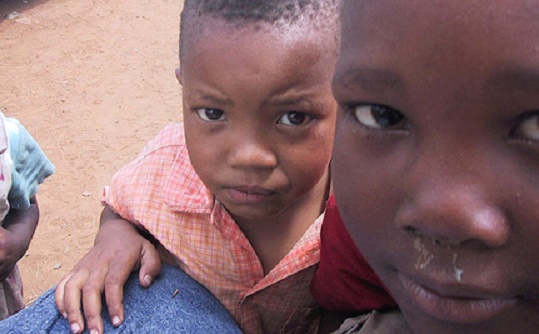
Every hour, around 30 children die of AIDS. On its corporate website, Johnson & Johnson makes a big deal about its “Giving in HIV/AIDS,” claiming to “work to prevent the spread of HIV and reduce the burden of AIDS on women and their families.” However, the Stop AIDS Campaign tells a different story. Johnson & Johnson is one of the few major pharmaceutical companies that is still refusing to negotiate with the Medicines Patent Pool to ensure that people waiting for life-saving HIV medicines can access them. Since Johnson & Johnson holds patents for some of the most vital and costly HIV drugs, their refusal to enter negotiations with the pool effectively cuts off access to these drugs for those who need it the most.
How the Patent Pool Ensures More People Are TreatedThe Medicines Patent Pool is an organization dedicated to “increasing access to quality, safe, efficacious, more appropriate and affordable medicines, focusing on HIV/AIDS.” The Medicines Patent Pool website describes how it works:
With the patent pool model, multiple patents are ‘pooled’ and licensed out by one entity, in order to cut down on transaction costs for all parties involved. In the case of medicines, this allows more affordable and more adapted versions of patented drugs to be produced as generics, long before their 20-year patent terms run out.
The Pool is a win-win-win model, whereby patent holders are compensated for sharing their patents, generic manufacturers gain access to markets, and patients benefit more swiftly from appropriate and adapted medicines at more affordable prices.
The website provides further details, including a step-by-step walkthrough describing the process from negotiations with the patent holder through to the creation of sustainable low prices, meaning that more people can be treated for the same sum of money.
The Two Faces of Johnson & JohnsonAccording to Johnson & Johnson, it is already providing its HIV/AIDS medication to patients in sub-Saharan Africa at 85% less than the commercial price in the United States (via a royalty-free voluntary license agreement Aspen Pharmaceuticals, a South African Company). The discounted price amounts to $3 per day, or more than $1000 per year. According to the New Internationalist, if Johnson & Johnson joins the Medicines Patent Pool, the price of some HIV treatments would be reduced from around $1000 per year to less than $100 per year. Since Johnson & Johnson isn’t selling a lot of drugs in those countries at the moment, opening up its patent to allow for the production of inexpensive versions of its drugs for those most in need would not have a big impact on the company’s profits.
Johnson & Johnson’s refusal to enter into negotiations with the patent pool and find a solution that could truly save lives stands in stark contrast to its corporate “social good” campaigns. Johnson & Johnson is one of the main sponsors of the Million Moms Challenge, which is “engaging a million Americans with millions of mothers in the developing world around issues that directly impact pregnancy, childbirth, and children’s health.” It has promised to donate $1 for each person who signs on to the campaign, up to a grand total of $100,000 (or, on other pages, the campaign indicates that Johnson & Johnson will donate $100,000 if 100,000 people sign on — meaning 100,000 appears to be both the minimum and the maximum number). The call to action doesn’t indicate whether that number has been reached, how close they are, or what happens to your e-mail address once you sign on.

While a donation of $100,000 would certainly be useful, the impact of that donation (and all of the hype around it) is a drop in the bucket in comparison with both:
• the impact that a negotiated agreement with the Medicines Patent Pool could have; and,According to the Stop AIDS Campaign, Johnson & Johnson is expected to announce on December 19th whether it will change its position and join the patent pool. Rachel Edwards, a student member of the Stop AIDS Campaign said:
One of the problems in the past has been companies making small, tokenistic efforts to ease access to treatment. The Medicines Patent Pool is a solution which aims to be industry-wide, matching the scale of the challenge. If J&J’s decision is negative we won’t stop campaigning – with so many millions waiting for HIV treatment we will keep pressuring J&J to join until they change their mind.
This is the type of pressure that is needed. Rather than a token sign-on to an campaign that may result in an $100,000 donation, consider being part of a campaign that will get J&J to change its practices. Demand a solution, not a much-too-small band-aid.

"All of the 97 Australian AIDS Memorial Quilts we have acquired are now on line and can be viewed here
Australian AIDS Memorial Quilts
The Museum's fabulous team of volunteers have also been documenting (as much as we can ) information on the individual panels and are up to Quilt 88 so by early next year (2014) the panel information will be up in detail.
I also developed an exhibition last year HIV & AIDS 30 years on: the Australian story
HIV and AIDS 30 years on: the Australian story




| Photos
of the Groves |
